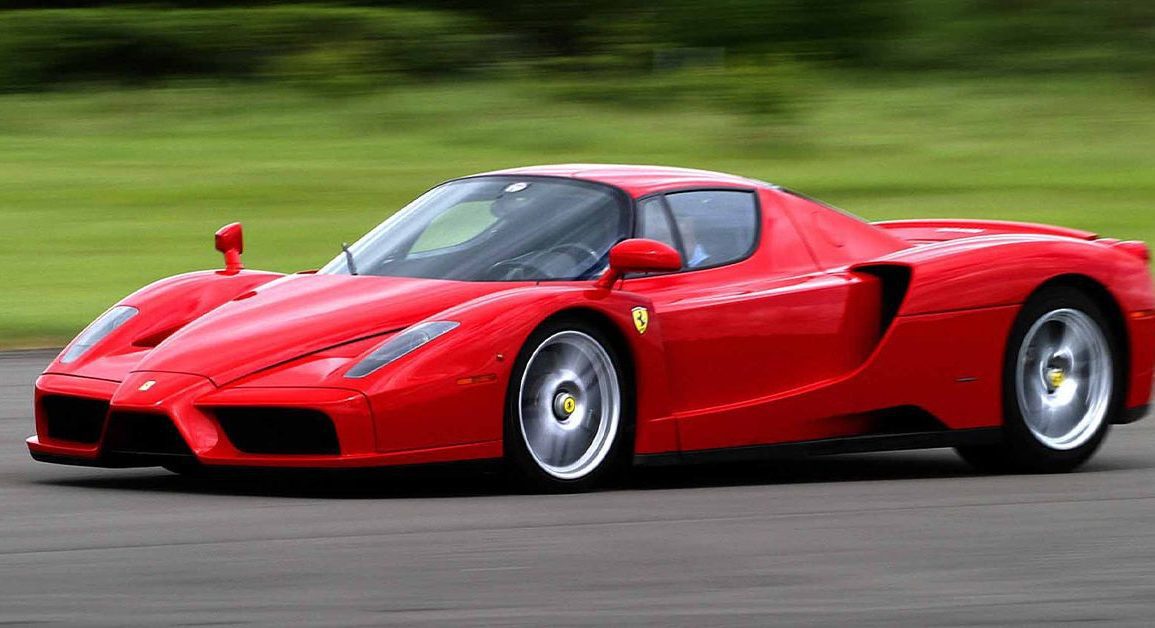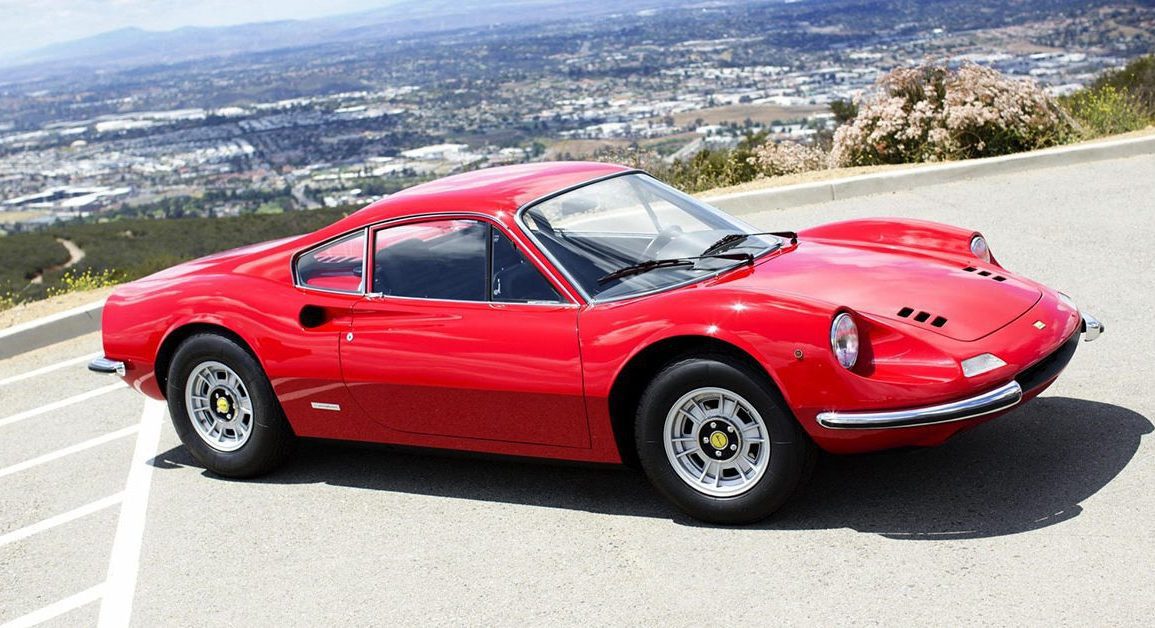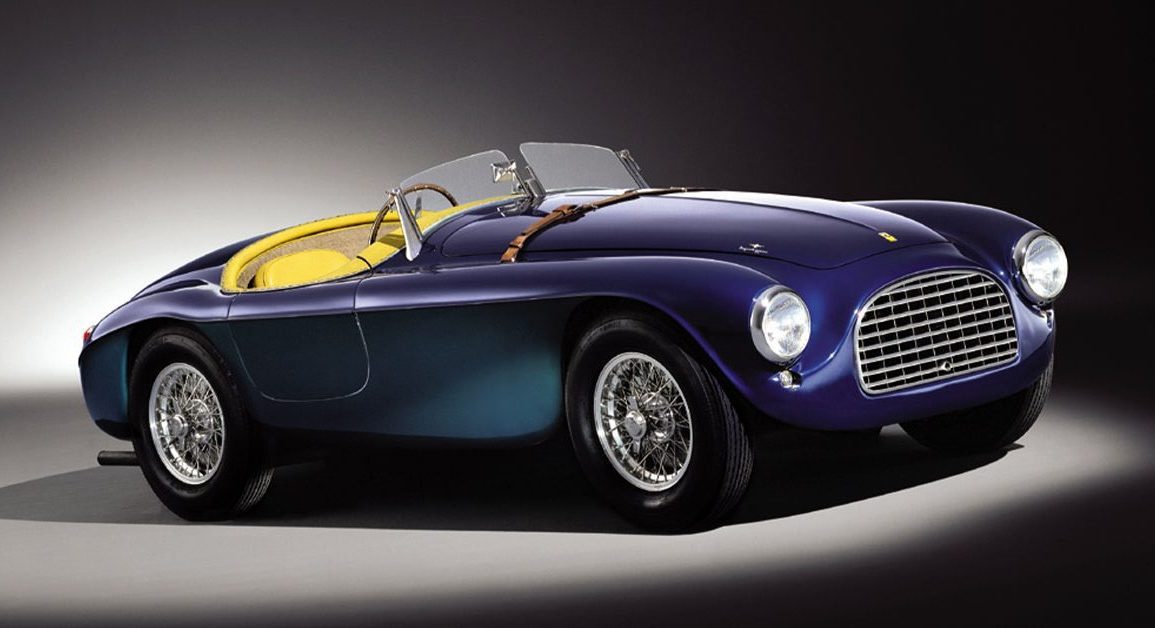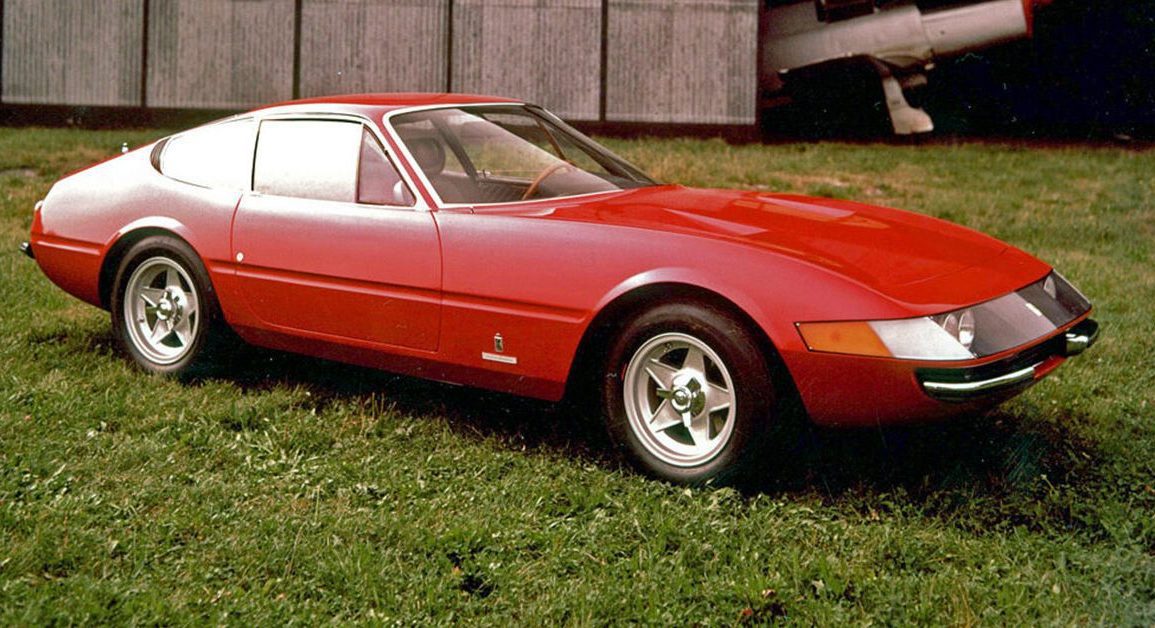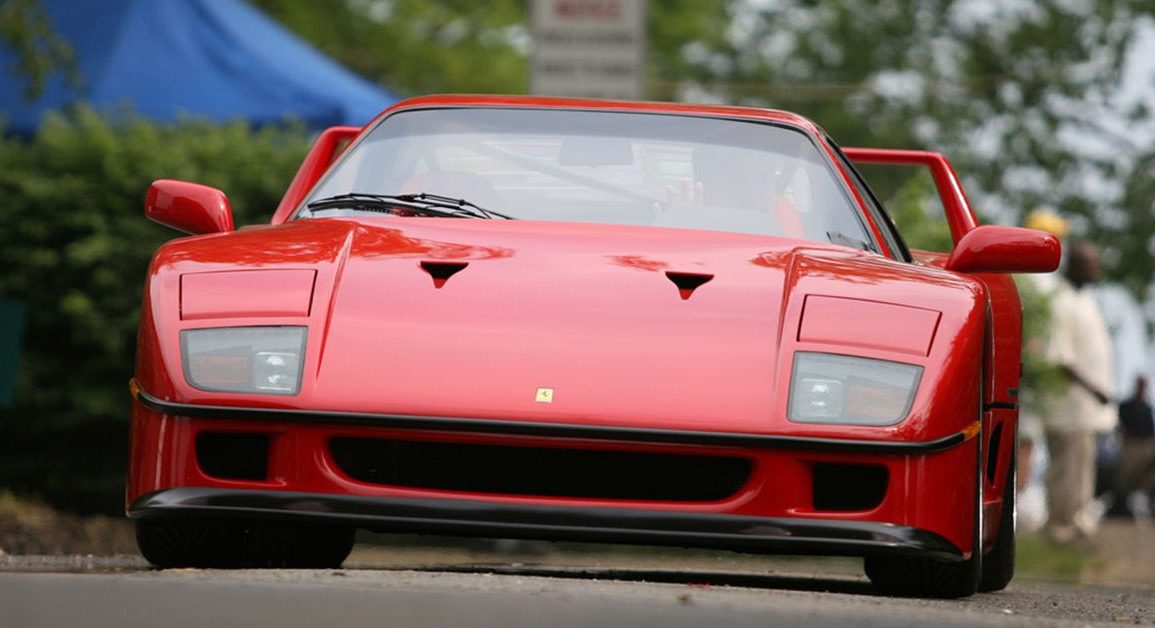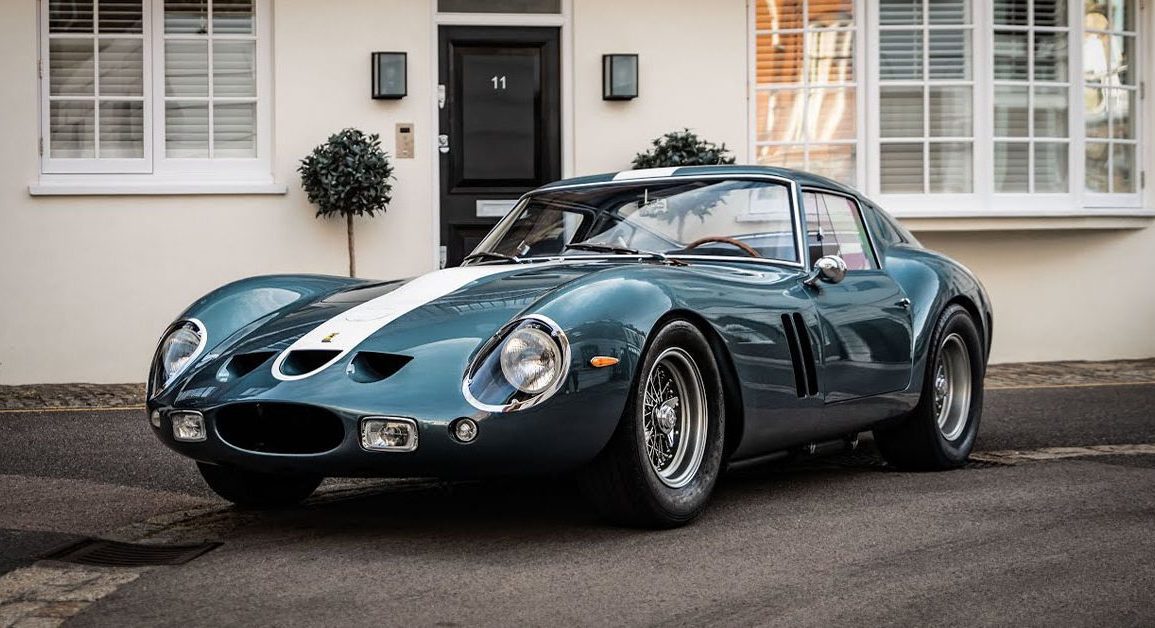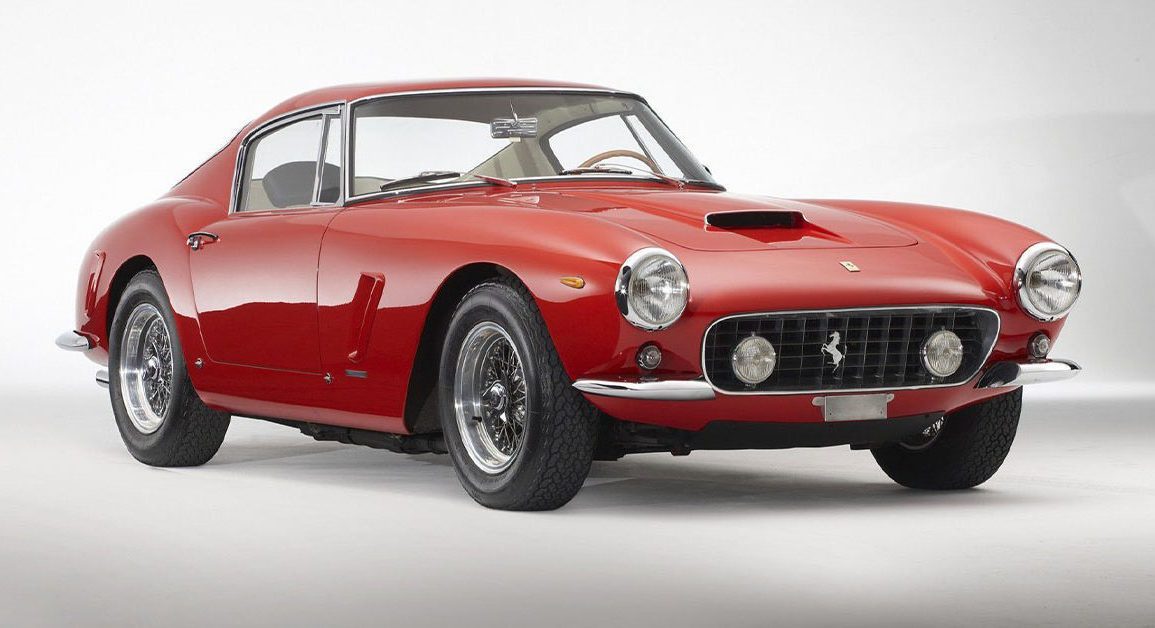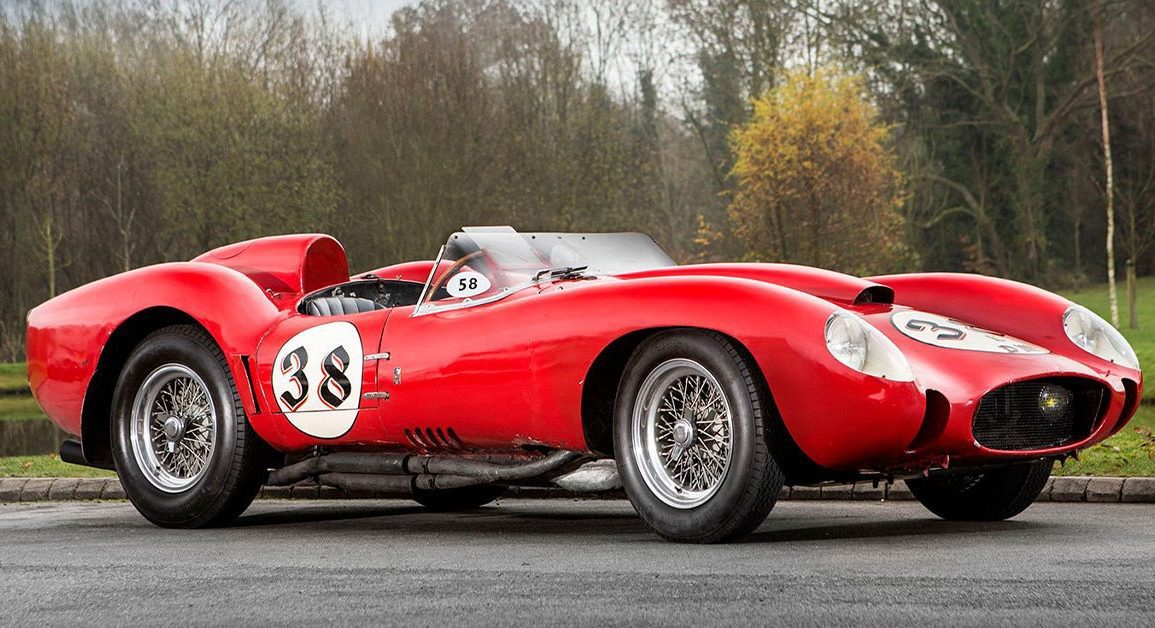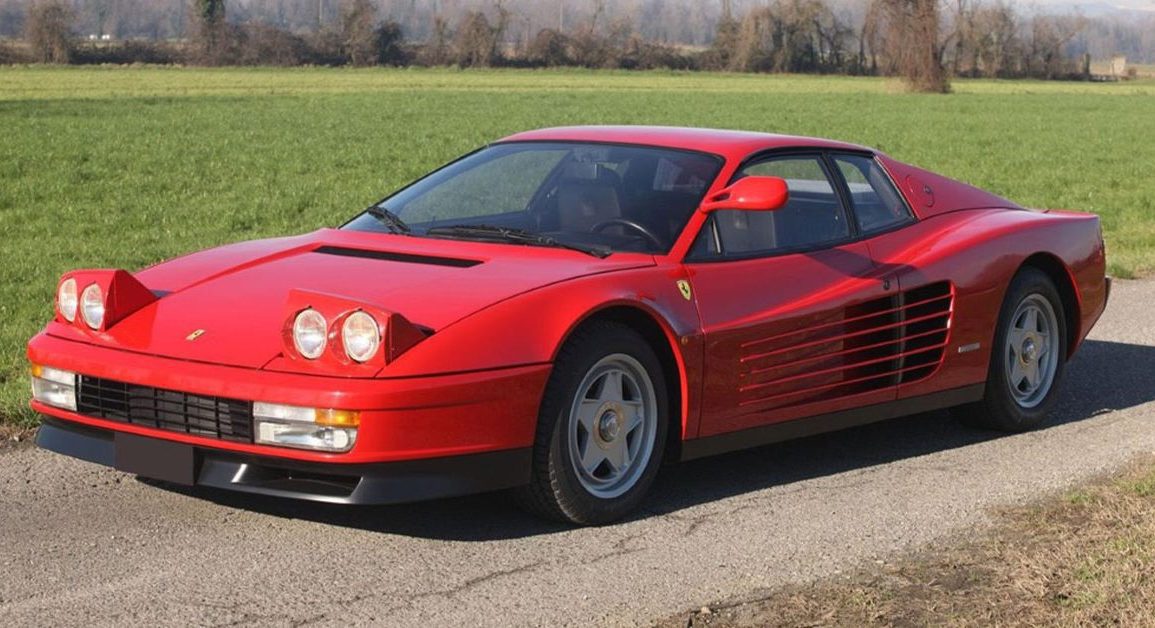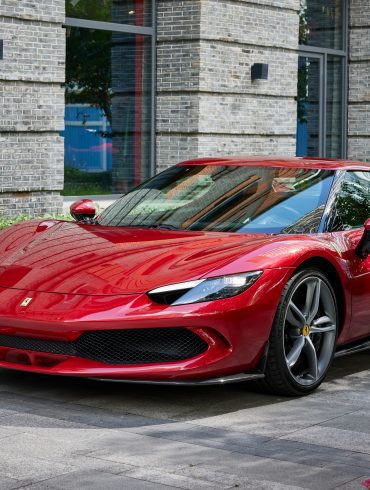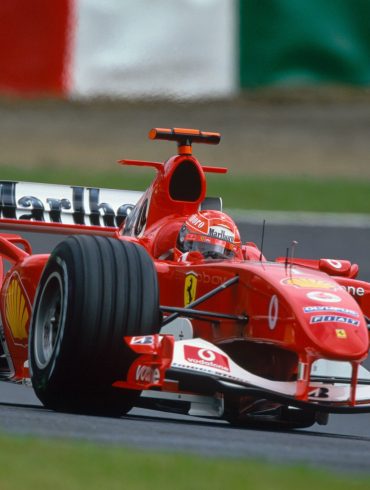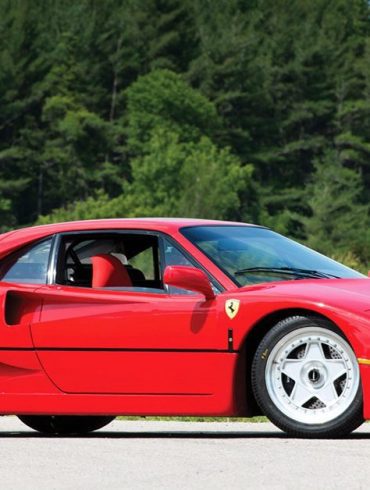Most Important Ferraris Ever Made
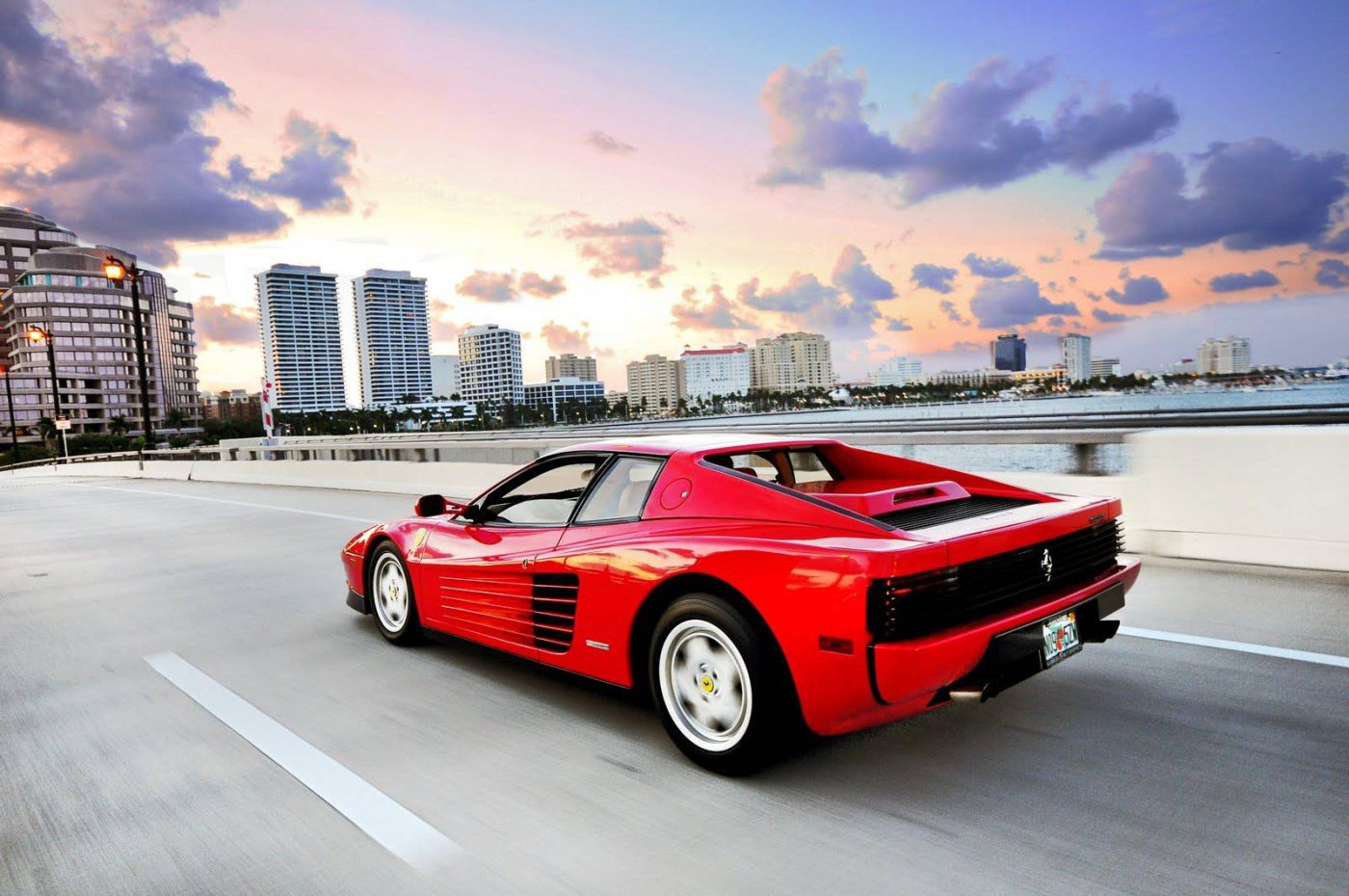
Beautiful silhouettes, legendary engines, and a motorsport heritage comprise this Ferrari list
About Our Selections
Ferrari's history is so illustrious that it was challenging to put together this list without leaving out legendary nameplates like the F50 launched to celebrate the brand's golden anniversary or the stunning 288 GTO, which was a milestone in Ferrari's history.
For over seven decades as a racing team and artisanal carmaker, Ferrari has created some of the most iconic cars in automotive history. Several of these automobiles from the Prancing Horse brand boast beautiful shapes, symphonic engines, or a motorsport legacy, sometimes all at once. So, without further ado, here's our pick of the most important Ferraris ever made.
Ferrari 365 GT4 BB
The first mid-engine 12-cylinder Ferrari
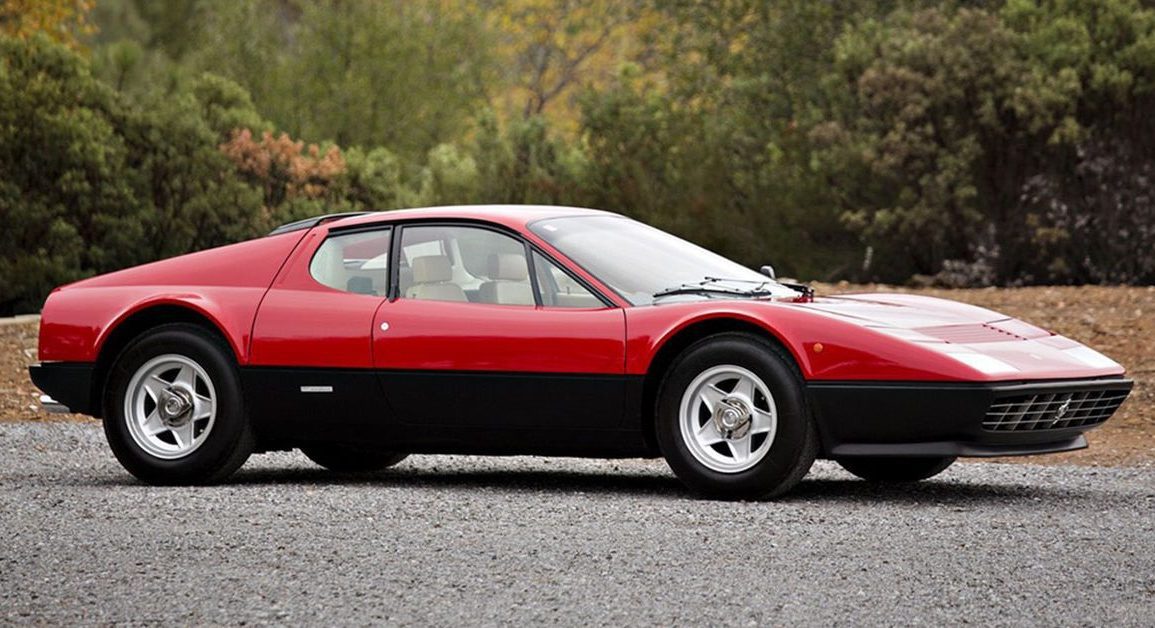
Why We Picked It:
Because of the Boxer Berlinetta's revolutionary horizontally opposed engine arrangement, Ferrari changed the name of its flagship model to the Berlinetta Boxer. In addition, for the first time, Ferrari put the engine behind the driver. Ferrari's V12 Berlinetta cars always had the engine in the front.
Ferrari knew that having the BB's transmission behind the engine would increase the vehicle's overall length (wheelbase) and possibly reduce cabin space. The result would be a more compact wheelbase and a larger interior. This meant that the engine had to be 'flat' to keep the center of gravity low, putting a lot of weight in a poor spot for handling.
The car went from 0 to 60 miles per hour in 5.4 seconds. Its handling and overall dynamism were unparalleled and critically acclaimed. Still, the 365 GT4/BB's wild and unpredictable reputation dampened the initial excitement. If you backed off the throttle mid-turn, the engine's mass wanted to keep going, causing the tail to snap around and the car to spin (aka old 911-style).
Specifications:
Price: $346,000
Engine: 4.4L Flat-12
Power: 380 hp
Torque: 319 lb-ft
Transmission: 5-Speed Manual
Curb Weight: 2,469 lbs
Highlights:
The original 365 is arguably the purest and, some say, the happiest of the Berlinetta Boxers to rev.
It's also the rarest, with just 387 built. Its 4390cc flat-12 with triple twin-choke Weber 4O IF3s produced a claimed 344 bhp and 302 lb/ft, and it's easily distinguished from behind by its triple rear lights (and triple exhaust tailpipes) at each corner.
Learn More:
Ferrari Enzo
The pinnacle of Ferrari
Why We Picked It:
Ferrari's new Gran Turismo, introduced in the early 2000s, took advantage of the company's fifty years of experience while drawing inspiration from Formula One technology. The Enzo, like the 288GTO, F40, and F50 before it, is part of a small run of road cars named after the company's founder. These vehicles are emblematic of Ferrari's aspiration to create the world's most luxurious and cutting-edge automobile.
Ferrari is no stranger to branding race-derived technology on road cars. Ferrari's road and racing cars were essentially the same until the late 1950s. Safety restrictions, production costs, and practicality have created a clear divide between race cars and everyday vehicles. The Enzo was created to close this gap.
As Luca de Montezemolo states, 'To bring together our racing success and the fundamental role of races, I decided that this car, which represents the best our technology is capable of, should be dedicated to the founder of the company, who always thought racing should lay the foundation for our road car designs.' Michael Schumacher and Dario Benuzzi helped test the Enzo.
Specifications:
Price: $2,500,000-$3,000,000
Engine: 6.0L V12
Power: 660 hp
Torque: 485 lb-ft
Transmission: 6-Speed Semi-Automatic
Curb Weight: 3,020 lbs
Highlights:
The Enzo was designed with a focus on handling and agility. It had a lightweight carbon fiber body and a sophisticated suspension system. This made it one of the best-handling cars of its era.
The Enzo is a special car because it represented the pinnacle of Ferrari's engineering and design at the time and resulted from Ferrari's rich legacy in racing translated into a road car.
Learn More:
Ferrari Dino 246 GT
Ferrari's first mid-engine car
Why We Picked It:
In 1968, Ferrari introduced the Dino sub-brand with the 246 as the line's flagship. The Scuderia required a smaller sports vehicle to compete with the Porsche 911, so the Dino was formed from the necessity for more compact V6 and V8 engines.
Dino was the nickname of Ferrari's late son and successor, Alfredo, who was only 24 years old when he passed away and was the only person who influenced Enzo Ferrari to switch from V12 powertrains to V6.
The front-engined Fiat Dino debuted the 2.0-liter engine in 1966, but Ferrari made a mid-engined car version the following year. Since the V6 produced less power than Ferrari's V12-powered cars, Enzo decided it was appropriate to create it as a mid-engined car, making it Ferrari's first mid-engined road car.
The original Dino's engine was only 2.0 liters in size, but the 246's V6 was 2.4 liters. After eight successful years, the Dino brand was discontinued in 1976 when the final Dino 308 GT4 was rebadged as a Ferrari.
Specifications:
Price: $200,000-$400,000
Engine: 2.0L V6
Power: 192 hp
Torque: 166 lb-ft
Transmission: 5-Speed Automatic
Curb Weight: 3,381 lbs
Highlights:
The Dino 246 was among the first Ferraris to have a mid-engine layout. This gave it excellent handling and balance.
The Dino 246 was more affordable than other Ferraris of its time, which made it more accessible to a broader range of buyers.
Learn More:
Ferrari 166 MM Barchetta
The car that put Ferrari on the map
Why We Picked It:
To commemorate their first significant success at the prestigious 1948 Mille Miglia, Ferrari upgraded their successful 166 Sport and made a series of cars called the 166 MM. These contributed more than any other previous type, scoring many of Ferrari's first international victories and establishing the company as a serious manufacturer of sports cars.
For their new series, Ferrari outsourced production of the bodies to Touring of Milan, who made 25 roadsters using their patented Superleggera technique. It fixed aluminum-alloy panels directly to a tubular space frame, which was both light and rigid.
From 1948 to 1950, Ferrari produced the 166 MM Barchetta, which became a legendary sports car. It was one of the first Ferrari models to achieve international success, and it helped establish the company as a major player in sports car racing.
A 2.0L V12 engine that produced 140 horsepower powered the 166 MM Barchetta. This gave the car a top speed of 140 mph, which was very fast for its time. The car also had a lightweight aluminum body, making it agile and responsive.
Specifications:
Price: $10,000,000
Engine: 2.0L V12
Power: 140 hp
Torque: 117 lb-ft
Transmission: 5-Speed Manual
Curb Weight: 1,984 lbs
Highlights:
After Luigi Chinetti convinced Enzo, who was concerned about the car's durability, to enter it in the 24 Hours of Le Mans, Ferrari became a household name worldwide.
The 166 MM Barchetta was a very successful racing car. It won numerous races, including the Mille Miglia, in 1948 and 1949. The car was also very popular with private owners and was considered one of the most desirable sports cars of its time.
Learn More:
Ferrari 365 GTB/4 Daytona
The last front V12
Why We Picked It:
The 365 GTB/4 was Ferrari's final front-engine V12 from the classic era. It debuted at the 1968 Paris Motor Show and set the standard for fast cars with its top speed of 170 miles per hour.
The 365's V12 was located up front like the 275 GTB/4, but it was bored out to 3.6 liters instead of 2.7. Four-wheel disc brakes, independent suspension, and a transaxle situated in the back helped keep the front-to-rear weight distribution of both vehicles even.
Lionardi Fioavanti was responsible for the car's aesthetic, and Pininfarina made painstaking adjustments to Fioravanti's lines. The defining characteristics were the long hood, short tail, and sharp nose. This nose used to have four lights hidden behind a Plexiglas cover, later replaced with pop-up headlights. The 4.4-liter V12 engine's 363 horsepower and 319 lb-ft of torque were responsible for the vehicle's top speed of 170 mph.
Its contemporary supercar, the Lamborghini Miura, with its transversely mounted, quad-cam V12 engine, made the Daytona look antiquated but lacked in outrageousness; it made up with driveability.
Specifications:
Price: $800,000-$2,000,000
Engine: 4.4L V12
Power: 363 hp
Torque: 319 lb-ft
Transmission: 4-Speed Manual
Curb Weight: 3,600 lbs
Highlights:
The Ferrari 365 GTB/4 Daytona was designed to focus on handling and agility. It had a balanced weight distribution and a sophisticated suspension system.
This was the final V-12 Ferrari created before Fiat acquired a 50% stake in the business and before rules significantly impacted automotive design.
Learn More:
Ferrari F40
The "last true Ferrari"
Why We Picked It:
Among the most renowned supercars ever manufactured is the final Ferrari to have the blessing of the great Enzo Ferrari. The Ferrari F40 has graced the bedroom walls of enthusiasts worldwide.
The Ferrari F40 incorporated a tubular steel chassis, Kevlar body panels, a carbon fiber bonnet, and doors. Its fantastic powertrain comprised a 2.9-liter twin-turbo V8 engine producing 478 horsepower and 425 pound-feet of torque. The engine was paired with a five-speed manual transmission with a gated shifter. The F40 was built to be a street racing machine. It had a top speed of 201 mph and could accelerate to 60 mph in 4.1 seconds.
The amenities and features in the F40 were kept at a minimum to make the car as light as possible, resulting in a curb weight of 1,100 kilograms. Pininfarina's bodywork underwent extensive wind tunnel testing for superior aerodynamic efficiency. Its short front overhang, large spoiler, and NACA air intakes made it easy to spot. Only 910 of the F40 were made during its production run from 1987 to 1992.
Specifications:
Price: $2,000,000-$3,000,000
Engine: 2.9L Twin-Turbocharged V8
Power: 478 hp
Torque: 425 lb-ft
Transmission: 5-Speed Manual
Curb Weight: 2,245 lbs
Highlights:
The Ferrari F40 stood out from the crowd thanks to its unusual wedge shape, massive front air intake, and sloping tail end.
Race-style seats with massive side bolsters greet the driver upon entering the cabin. Finished in bright red and capable of hosting a three-point harness, the connection between the race car and production car is unmistakable.
Learn More:
Ferrari 250 GTO
The Holy Grail
Why We Picked It:
One of the ultimate production road racers was the Ferrari 250 GTO. Classic proportions and a striking profile give this automobile instant recognition, and its unparalleled racing success only adds to its legend.
In addition, only 36 Ferrari 250 GTOs were ever made, making it the most sought-after Ferrari model due to its innovative design and significant record in road racing.
The Ferrari 250 GTO's aerodynamic design and potent hand-built V12 engine allowed it to reach an incredible top speed of 170 mph. The GTO's exterior was a masterful creation by Giotto Bizzarrini, who relied heavily on wind tunnel testing.
The Ferrari 250 GTO was the first car to have a rear spoiler that was built into the body. With its tall rear end and whisper-quiet performance, it has quickly become a motorsports legend.
It quickly gained praise as the car with the most distinctive design. The Ferrari 250 GTO is widely considered one of the most aesthetically pleasing cars ever and the most expensive in history.
Specifications:
Price: $30,000,000-$70,000,000
Engine: 3.0L V12
Power: 302 hp
Torque: 216 lb-ft
Transmission: 5-Speed Manual
Curb Weight: 2,229 lbs
Highlights:
The GTO won three World Sportscar Championships, ushering in the end of a halcyon time when race vehicles could also be driven on the street.
The Ferrari 250 GT SWB significantly influenced the car's design by Sergio Scaglietti. Its aggressive yet refined silhouette, grille up front, and rounded body give it a classic and alluring look.
Learn More:
Ferrari 250 GT Lusso
The middle ground between racing and luxury
Why We Picked It:
The Lusso fell between Ferrari's extreme racing cars and its ultra-luxury offerings. Its goal was to provide the thrill of driving a Ferrari sports car while being fully equipped to handle the rigors of daily life. The GT/L is shorthand for the 250 GT's replacement, a larger and more luxurious version of the outgoing design widely regarded as one of the most aesthetically pleasing vehicles to bear the prancing horse symbol.
Incorporating a V12 engine fed by three Weber carburetors and a Short Wheel Base (SWB) chassis used in some of the earlier race cars gives it a sporty disposition. The GT/L's proportions were impeccable, resulting in a sleek profile thanks to its lengthened body, curved fenders, slim pillars, shortened trunk, and attractive three-piece front bumper.
Pininfarina designed, and Carrozzeria Scaglietti, under Enzo Ferrari's supervision, built the Ferrari 250 GT Lusso. Although Gran Turismo/Lounge (GT/L) was designed to be a grand tourer that could also be driven on public roads, many owners modified their vehicles for track use. The GT/L shared the 250 GTO's short wheelbase (SWB), disc brakes, suspension, and engine, all of which are hallmarks of a race car.
Specifications:
Price: $1,530,000-$2,800,000
Engine: 3.0L V12
Power: 240 hp
Torque: 215 lb-ft
Transmission: 4-Speed Manual
Curb Weight: 2,890 lbs
Highlights:
The Ferrari 250 GT Lusso was the first Ferrari road car to use a ducktail, a design element first developed for racing and later adapted for use on road cars.
The E46 M3 has a timeless design that is elegant and aggressive, inspired by BMW's motorsport heritage.
Learn More:
Ferrari 250 Testarossa
One of the most successful Ferrari race cars
Why We Picked It:
Testarossas may evoke thoughts of Miami Vice, the 1980s, and a mid-engine supercar with enormous side strakes, but this 1958 model is more significant in Ferrari history. In addition to being one of Ferrari's most successful race vehicles on the track, the 250 Testa Rossa (TR) also had an unconventional but functional body designed by Scaglietti & C.
The 250 Testa Rossa was created for Scuderia Ferrari and private competitors for the 1958 season. 3.0 was the maximum engine size allowed to reduce top speeds. Regarding their new sports car, Ferrari had two options that worked best during tests in 1957.
In two unique prototypes, a V6 and a scaled-down variant of the quad-cam V12 were tested; however, neither was selected. Instead, the 250 GT Berlinetta was powered by the SOHC V12, which had already shown to be dependable by winning the Tour de France on multiple occasions. The chassis of the 250 Testa Rossa was a synthesis of the Columbo V12 and 500 TR. These parts were chosen over the more complicated, heavier quad camshaft and dual-ignition systems found in the 335.
Specifications:
Price: $440,000-$900,000
Engine: 3.0L V12
Power: 300 hp
Torque: 281 lb-ft
Transmission: 4-Speed Manual
Curb Weight: 1,750 lbs
Highlights:
The TRs won every significant sports car race of the time and cemented Ferrari cars as impressive competition vehicles.
The 250 Testarossa introduced a design philosophy focused on reliability over outright performance. Ferrari wanted to sell consistent cars that could endure for 24 hours.
Learn More:
Ferrari Testarossa
The timeless Ferrari
Why We Picked It:
The Ferrari Testarossa is widely recognized as one of the most legendary cars ever produced. Brand loyalists were initially unwilling to accept the new model due to its odd appearance, but they came around in the end.
The Pininfarina-designed car looked incredibly futuristic. However, the Testarossa is currently considered among the most visually appealing Ferrari cars ever made.
This fantastic supercar was powered by a 5.0-liter flat-12 engine, which generated 390 horsepower and 354 pound-feet of torque. It could reach its top speed of 180 mph and 60 mph in 5.6 seconds.
The Testarossa is a symbol of automotive excess and high performance. It became an immediate classic thanks to its eye-catching appearance, potent engine, and outstanding performance. Collectors who value its one-of-a-kind look and performance have kept it in great demand since its introduction in the 1980s.
Specifications:
Price: $150,000-$300,000
Engine: 4.9L Flat-12
Power: 385 hp
Torque: 361 lb-ft
Transmission: 5-Speed Manual
Curb Weight: 3,766 lbs
Highlights:
The Testarossa boasted a striking wedge-shaped profile with a low, wide stance. Its sleek, angular design and pop-up headlights add to its clean, aerodynamic front end.
One of the most iconic Testarossa design elements is its side strakes, or "cheese grater" cooling vents.


